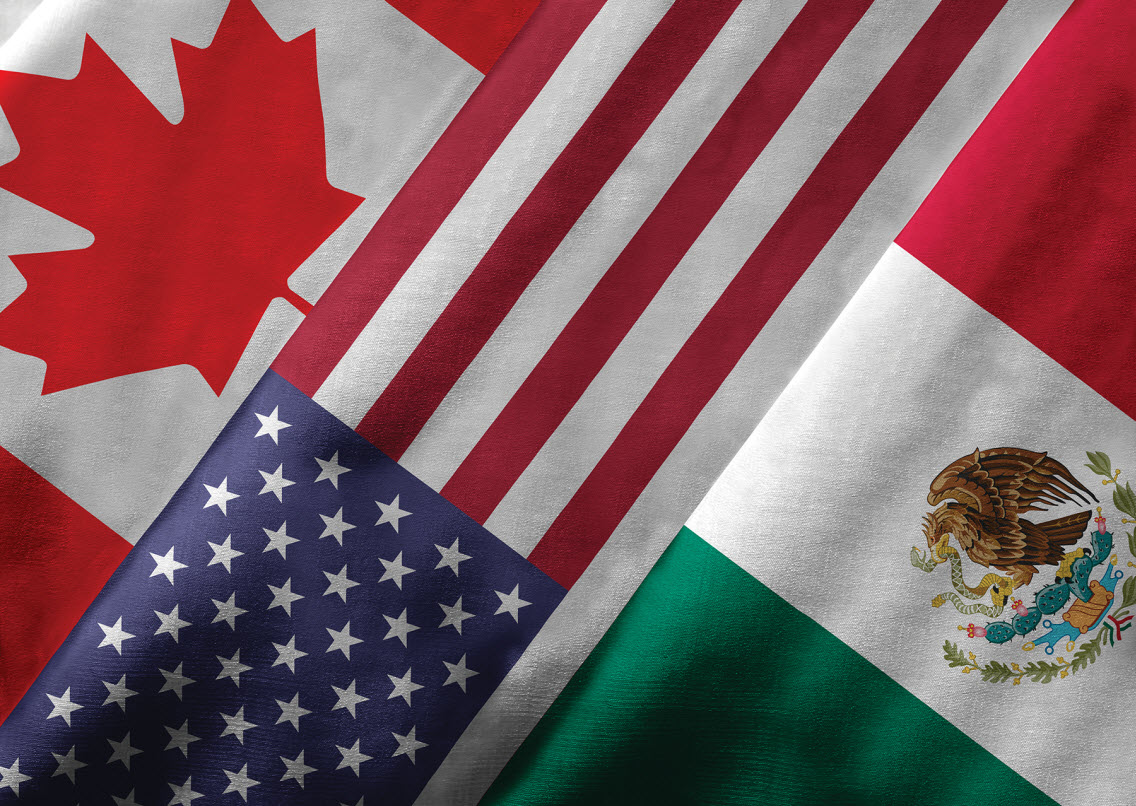By Mike Kastner
NTEA Managing Director
Jeffrey Phillips
Dawson Strategic

On Sept. 30, 2018, the United States, Mexico and Canada announced a new agreement to govern North American trade and investment that will supersede the North American Free Trade Agreement (NAFTA). Announcement of the new trade deal was greeted favorably by U.S. business groups such as Chamber of Commerce, Business Roundtable and National Association of Manufacturers. Business Council of Canada,applauded the “much-needed certainty and clarity for investors in all three countries.”
President Trump said the agreement is “a great deal for all three countries,” and Prime Minister Justin Trudeau said it was a “good day for Canada.”
NTEA’s Ottawa office was invited to attend an Oct. 2 talk and discussion with Canadian Finance Minister Bill Morneau to business leaders at Greater Vancouver Board of Trade. From the Canadian perspective, Minister Morneau noted “we have created stability with our largest trading partner this week with the new deal between the United States, Mexico and Canada.”

The trilateral United States-Mexico-Canada Agreement (USMCA) maintains many key elements of NAFTA and concludes nearly 14 months of difficult negotiations. It seems to satisfy the main negotiating objectives for all three countries.
At this stage, it is an agreement in principle, and key details are still being worked out. USMCA still needs to be signed by all parties and undergo the ratification process in each country’s national legislature before it comes into force, which is expected to be in 2020. In the meantime, NAFTA will continue to apply to trade between the three countries.
The new framework serves to strengthen stability and predictability across North American economies, and for this reason, has been welcomed by business communities in all three countries.
Following is an overview of specific elements of interest to the work truck industry.
Tariffs
- USMCA maintains a “mostly” free regime in North American automotive trade. However, the North American content threshold has been raised from 62.5 to 75 percent. While Canada worked out an exemption from U.S. auto tariffs as long as it exports less than 2.6 million cars a year, the quota number for trucks is still to be negotiated. Anyone involved in manufacturing should consider beginning an origin audit now to ensure inputs from third countries (e.g., China, etc.) do not disqualify their product from receiving USMCA preferences.
- The Agreement does not address Section 232 national security tariffs imposed by the U.S. on steel and aluminum, nor the retaliatory Canadian tariffs. Discussions continue between U.S. and Canada on the possibility of voluntary quotas in lieu of tariffs, as have been negotiated with certain other countries. At this point, there is no indication if or when tariffs will be lifted. Moreover, there is a possibility additional national security tariffs may be imposed on automotive trade exceeding quota limits set in the new agreement. However, quota limits were intentionally set much higher than current near-term export levels, so the likelihood of these additional tariffs being applied in practice is limited.
Customs threshold
- Canada raised its de minimis threshold (the value below which international shipments are exempt from customs processes, duties and taxes) up from the previous $20. The new tax threshold (the limit below which no sales taxes are levied) will rise to $40 and the duty-free limit climbs to $150. Currently, shipments moving through Canada Post will not benefit from the higher threshold, but this could change.
Minimum wage requirements
- A new provision requires at least 30 percent (increasing to 40 percent by 2023) of cars be made by workers earning U.S. $16 per hour to benefit from USMCA. This provision is more likely to impact automobile production in Mexico than Canada.
Regulatory cooperation
- The new agreement has a chapter on Good Regulatory Practices designed to drive increased regulatory cooperation between all three countries. The chapter sets forth a series of obligations related to the planning, design, issuance and implementation of the parties’ respective regulations. The goal is to reduce unnecessary duplication in regulations while maintaining or enhancing standards of public health, safety and environmental protection. These measures could help support greater alignment of vehicle safety and emissions standards.
China
- The new agreement includes a clause that requires any of the countries in the pact to provide three months’ notice to the others if it enters into negotiations with a non-participant country. If a USMCA country enters into a trade deal with another country, it could be kicked out of the USMCA pact. This clause is primarily aimed at preventing side deals with China that might be viewed as harmful to the new pact. This sort of language is likely to be a template for other trade agreements such as those with Japan, European Union and United Kingdom.
While USMCA is being framed as a new agreement, many key provisions in NAFTA remain intact. It is not expected to fundamentally alter the existing patterns of trade and investment between the U.S., Canada and Mexico.
President Trump said he plans to sign the agreement in November and submit it to Congress. Congress is unlikely to take up ratification before the end of the year. Nonetheless, U.S. Trade Representative Robert Lighthizer indicated he believes Congress will ratify the agreement based on beliefs that Democrats will like the improved labor standards and environmental protection in the pact.
NTEA will continue to speak with officials and monitor developments as more details come into place.
For more legislative and regulatory information, visit ntea.com/advocacy and ntea.com/canada.